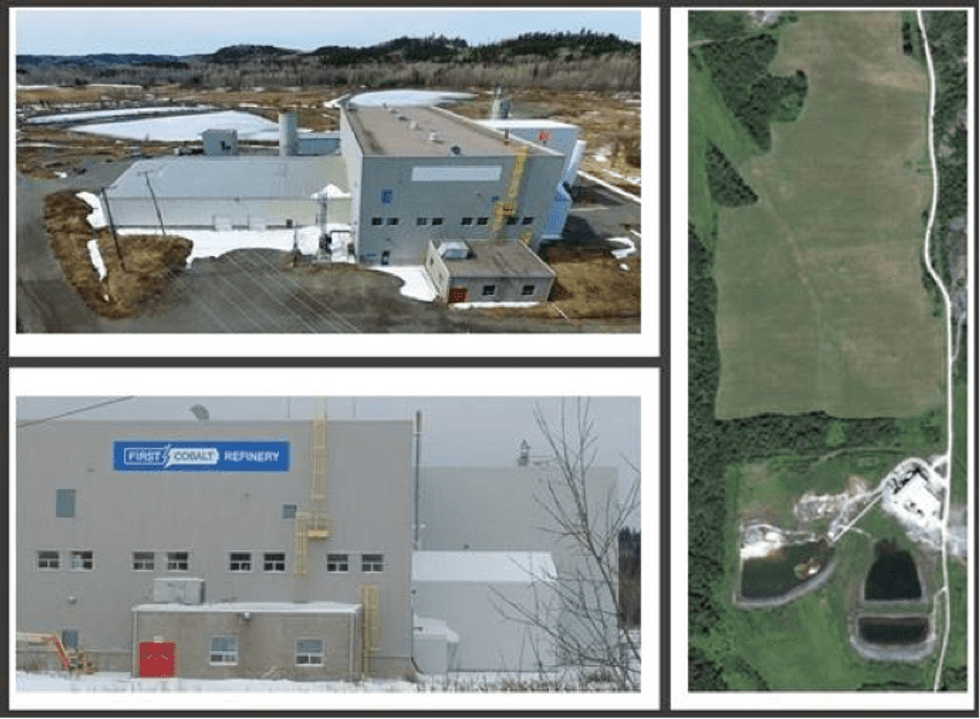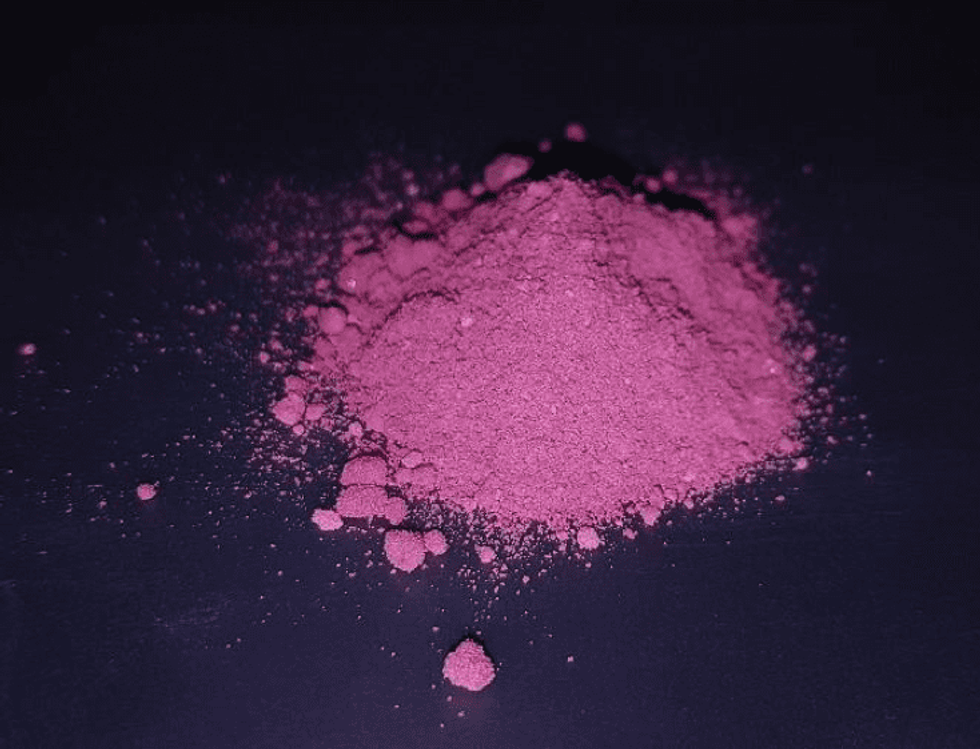First Cobalt CEO Trent Mell Sees Opportunity in the Cobalt Marketplace

First Cobalt CEO Trent Mell joined the Investing News Network to discuss the progress his company has made with its North American cobalt refinery.
First Cobalt (TSXV:FCC,OTCQX:FTSSF,ASX:FCC) CEO Trent Mell believes that the company’s Iron Creek project could become one of the most important cobalt assets in the world outside of the Democratic Republic of Congo (DRC).
In the interview below, CEO Trent Mell provides an overview of First Cobalt’s progress in redeveloping the company’s Ontario cobalt refinery. The company has demonstrated the ability to take cobalt hydroxide as an input and convert it into battery-grade cobalt sulfate, which can then be used to produce batteries for the growing electric vehicle (EV) market. First Cobalt is currently in talks with manufacturers in order to deliver cobalt sulfate that matches the specifications of manufacturers.
In addition to its Ontario refinery, First Cobalt has continued to explore its Iron Creek project in Idaho. According to Mell, recent drilling at Iron Creek has established that the project could be operated as either a smaller high-grade underground play or as a high-tonnage, low-grade open pit. First Cobalt continues to conduct drilling programs on Iron Creek with the ultimate goal of serving the growing cobalt market. Since it is a pure-play cobalt project located in the US, Mell feels that Iron Creek has the potential to become one of the most important cobalt assets in the world.
Below is a transcript of our interview with First Cobalt CEO Trent Mell. It has been edited for clarity and brevity.
Investing News Network: What makes the First Cobalt refinery unique?
First Cobalt CEO Trent Mell: Well, the unique aspect of the refinery is that it’s located here in North America. When you look at where refining is done today, the majority of it is in China. If you look specifically at the lithium-ion battery market or the growing EV market, 80 percent of that is in China today. We have a critical mineral that is important not just to our economic situation for the automotive sector but also to national defense, because it has important defense applications. And you’ve got absolutely no refining that goes on in America today. This facility is permitted, it’s operated, it has a flowsheet that works and has the potential to become the very first producer of cobalt sulfate in America.
INN: Why is this important to investors?
TM: For our investors, this is huge. It’s hard to understate how important this is, because this means cash flow. When you are a miner like us or a junior exploration company, you typically don’t own assets like this. This is all the way downstream. This is facing the market and, by our estimations, produces meaningful margins in a market that is only going to get stronger over time. For us to have this refinery in Canada — it has its permits, it’s got an operating history and now we’ve got metallurgical results that say, “Hey, yes! This thing will work.” It can produce the kind of refined product that the market is looking for. It really sets us on a fast track to cash flow at a faster rate than would otherwise be the case if we were to look to develop our mining assets.
INN: First Cobalt released new results in the refinery that’s producing cobalt sulfate. Can you tell us about those results?
TM: Historically, this refinery produced something called a cobalt carbonate. It took from mine feed, arsenic-rich mine feed, the type you see all over North America, and it produced a carbonate product. The asset has been dormant for a few years, so we wanted to bring it back so it could face the EV market and the battery market. Our tests were designed to take further upgraded material, something called cobalt hydroxide, and to test our refinery’s ability to convert that into a battery-grade cobalt product, which is called cobalt sulfate. SGS in Lakefield in Ontario was able to replicate our flowsheet and demonstrate that, indeed, our worksheet does work to produce high-grade cobalt sulfate with high purity.
INN: What does this mean for the North American battery manufacturers?
TM: Every battery maker and every car company will have their own battery spec. Now that we have this result, it sets us up for more advanced discussions with battery makers and with EV companies. We have quite a number under confidentiality agreements to work with them and their specifications, to see if we can further refine our product to meet their demand. We’ve got a proof of concept that gets us well down the path, and we’re going to continue advancing those discussions with them, with the goal of becoming a preferred supplier in North America.
From their perspective, what does it mean? It means you’ve got potential for domestic supply of a critical mineral that is by all accounts the pinch point in the automotive supply chain and the lithium-ion battery supply chain going forward. We know we’ve had a great run in cobalt prices in 2017 and a pullback in 2018, but that doesn’t change the supply and demand dynamic further out. By 2022 or 2023, most are anticipating a pretty tight market, and our ability to be a supplier here in North America just limits that risk to them once we get into production.
INN: How important is this milestone to First Cobalt?
TM: When you have cash flow you control your own destiny. For us, it is important because it will allow us to fund our way going forward and reduce our reliance on the capital markets for our projects, specifically for our Iron Creek project in Idaho. From the investor’s standpoint and from a capital markets perspective, this really sets us apart because there aren’t many pure-play cobalt companies out there, particularly after the challenges we saw in 2018. This makes us particularly unique; there is no other junior mining company in the world that actually controls their refining facility. Our ability to get this operating quickly sends us into a whole different league.
INN: Today’s study is focused on using cobalt hydroxide as a feed source. Why did you choose to focus on this material?
TM: First of all, there is a lot of hydroxide in the market today, and the material that we see going to China is primarily a hydroxide form, so it’s semi-processed cobalt, most of which it is coming from DRC. The abundance of it makes us comfortable that it would be relatively easy to supply the refinery on a consistent basis. The early conversations that we’ve had with some of the world’s largest cobalt miners have borne that out. There is a lot of interest in dealing with us and potentially entering into a supply agreement.
The second reason is the grade of this material. Historically, the kind of feed you would see coming into the refinery had grades ranging up to 7 to 15 percent; when you start looking at hydroxides, we’re looking at grades of 25 to 30 percent. Higher-grade material means you’re producing more units, more cobalt tonnage to the refinery, and you’re generating stronger cash flow. The third reason that we want the hydroxide is because it’s kind of easier to process. We’ve demonstrated that now today. The ability for us to upgrade to battery-grade cobalt sulfate is possible using a flowsheet that originally wasn’t designed for this kind of a product, and we’re pretty confident now that we’re going to be able to see this through to the next stages.
INN: Late last year, you announced the results of three studies on the requirements to restart the refinery. How does this recent news fit into those requirements?
TM: With the studies we put out last fall, we really wanted to assess the viability of that refinery, so we looked at the flowsheet, looked at the capital and looked at the operating cost. That was the backbone of our work. They basically concluded that, with a modest amount of capital, about US$30 million, you could put the refinery back into production and with a quick payback too. My estimation would be under 18 months. We also wanted to look at the permits, which are, for the most part, in good standing. One needs to be renewed; however, that won’t be a barrier to restarting. The last one had to do with the market study: what feed is out there, and what final product would you produce. The results that we are putting out right now imply that we’ve chosen our feed source. We’ve looked at hydroxides and we’re looking at creating battery-grade sulfate as the final product. So this is just a natural progression from those initial studies, albeit a really important one, because now we have actual data and results that we can take to the cobalt miners, EV companies and the providers we are already in discussions with.
INN: What are the next steps for the refinery?
TM: Until now, with the counterparties I just mentioned, it’s been a “getting to know you” exercise: Here’s our refinery, here’s where we are and this is our strategy. Now that we’ve got some results, it will allow us to do some more detailed engineering and hone in a bit more on the cost structure of this facility. It also opens the door for more advanced discussions regarding what our offtake relationship would look like, both in terms of the feed purchase with the miners and where it would be sold to after. So it’s closer down the path to selecting a feedstock and making the decision to commence with the process of refurbishing and reconditioning the refinery that, frankly, has been dormant for too long.
INN: First Cobalt has been working on advancing the exploration in Idaho, Iron Creek. Can you give us an update on that project?
TM: I think Iron Creek stands to become one of the most important cobalt assets outside of the DRC. We demonstrated in our maiden resource that it is a large deposit, demonstrated that it could be viewed as either a smaller high-grade underground play or as a high-tonnage, low-grade open pit. What we’ve also seen with that resource and all of our drilling since then is that this deposit remains open in all directions. As we drill deeper into the resource, and as we drill east and west along the strike of this mineralization, we haven’t found the extent of it yet. We did our Phase 2 drilling, and we’re working our way towards a second resource estimate. I think the takeaway here is that this asset is unique by virtue of its size, which we are starting to see. It’s also unique because it’s a primary cobalt play, which is extremely rare worldwide. The fact that this one is located in America just makes it that much more special. As the cobalt market strengthens, we will start to spend a little more time on the Iron Creek asset, but over the short term our focus has to be on the refinery and getting that started again.
INN: Is there anything else you would like to update investors on as we move into Q2?
TM: I think it would be important to touch on the cobalt market, because it went from a top performer to underperformer last year. As of last Friday, for the first time in a long time, we actually saw the price of cobalt go up. These movements are largely dictated by China, which is a big purchaser of cobalt products. We’re seeing the price now move up for the first time. Our purchasing manager index is up today, and we are, not coincidentally, in the early days of a new fiscal year for a lot of Chinese companies, so it’s only logical to assume that we will see new restocking and purchasing of cobalt as they start out their new year. In fact, I’m hearing from cobalt traders that there have been more inquiries and more interest in larger orders of cobalt. We may be seeing the early days of a turnaround in the market, which in my view is long overdue.
This interview is sponsored by First Cobalt (TSXV:FCC,OTCQX:FTSSF,ASX:FCC). This interview provides information which was sourced by the Investing News Network (INN) and approved by First Cobalt in order to help investors learn more about the company. First Cobalt is a client of INN. The company’s campaign fees pay for INN to create and update this interview.
INN does not provide investment advice and the information on this profile should not be considered a recommendation to buy or sell any security. INN does not endorse or recommend the business, products, services or securities of any company profiled.
The information contained here is for information purposes only and is not to be construed as an offer or solicitation for the sale or purchase of securities. Readers should conduct their own research for all information publicly available concerning the company. Prior to making any investment decision, it is recommended that readers consult directly with First Cobalt and seek advice from a qualified investment advisor.
This interview may contain forward-looking statements including but not limited to comments regarding the timing and content of upcoming work programs, receipt of property titles, etc. Forward-looking statements address future events and conditions and therefore involve inherent risks and uncertainties. Actual results may differ materially from those currently anticipated in such statements. The issuer relies upon litigation protection for forward-looking statements. Investing in companies comes with uncertainties as market values can fluctuate.

